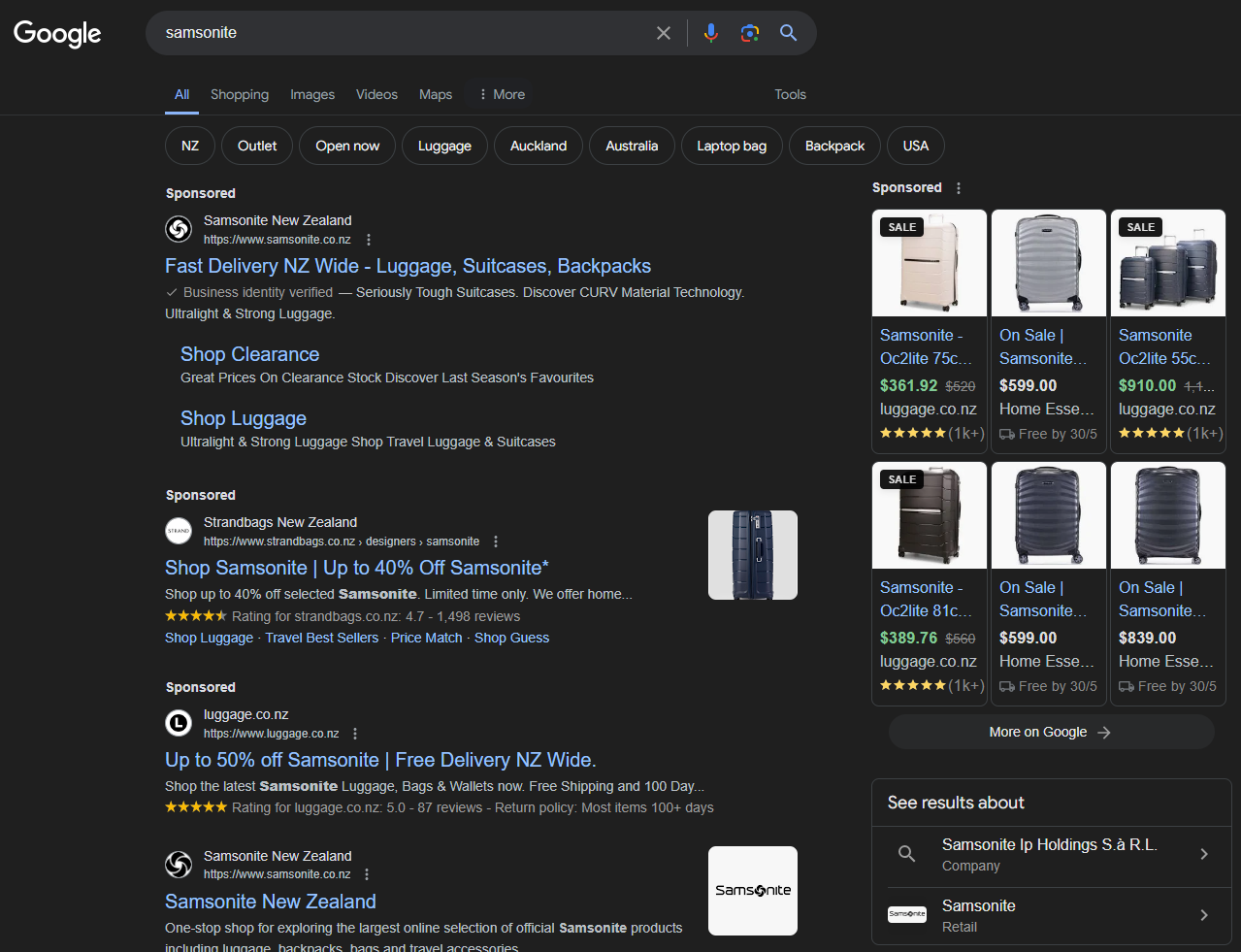Structured data is like Google's secret weapon for understanding your web pages and the purpose of your website. It's the key to unlocking more relevant search results for users, aligning perfectly with their specific queries, locations, and preferences. SEO focuses on fine-tuning your website for search engines to crawl and index efficiently, and structured data is the superhero tool that makes it all possible.
What is structured data?
A standardised format for providing information about a page and classifying the page content (Source: Google).
Think of structured data as a secret code language for computers. It's like creating a digital treasure map that guides search engines on how to showcase your content in the most appealing way on search engine results pages. So, when we talk about structured data, we're basically talking about 'marking up' your content with this special code.
"Google uses structured data that it finds on the web to understand the content of the page, as well as to gather
information about the web and the world in general."Source: Google Search Central
Structured data helps Google understand the nitty-gritty of your images and content, ensuring they appear just right in search results. These fancy results, also known as "rich results" or "rich snippets," may not be a guarantee when you add structured data, but they definitely make your webpage eligible for some extra flair. Essentially, structured data is like a superpower that gives Google all the juicy details about your webpage content, with Schema.org as your trusty sidekick for structured data markup.
What is Schema.org?
Schema.org, the mastermind behind the creation of structured data language and guidelines, offers a treasure trove of code examples for website owners to customise according to their preferences. Whether you're selling services or showcasing products, Schema.org provides the key to displaying essential details like prices, stock levels, reviews, and ratings. Embraced and comprehended by Google, Schema.org is a must-use resource to enhance your website's visibility and relevance in search results.
Google recommends using JSON-LD as the preferred format for adding schema markup. This script can be easily inserted into your web page, allowing you to communicate structured data effectively to search engines. Compared to other formats, JSON-LD is not only Google's top choice but also simpler to implement. Just place the script within your webpage's code, and you're good to go!
Three moves for implementing structured data
- Team up with a developer
- Utilise a plugin
- Take matters into your own hands
Structured data is typically handled by developers due to its coding intricacies. Many marketers choose to collaborate with web developers to ensure this task is executed flawlessly. However, if you find yourself without access to development resources, fear not – there are still ways to harness the power of structured data. Not all Schema markups are created equal: some are easily implemented independently, while others may require more effort, especially with additional properties that are either mandatory or recommended. A useful rule of thumb is to gauge the complexity of the markup based on the number of recommended properties it entails.
For those utilising WordPress as their CMS, incorporating structured data can be as simple as installing plugins designed for this purpose. If developer access or plugins are out of reach, don't fret – you can still opt for the manual implementation of schema markup. While this may demand a bit of technical know-how, it is certainly achievable. If coding is not your forte, consider outsourcing this task to a developer. However, if you are comfortable dabbling in code, adding schema markup can be a straightforward process.
To incorporate structured data into your webpage:
- Start by inserting a JSON-LD script element in the head HTML of your page.
- Within the script, specify to Google that you're utilising Schema.org for structured data.
- Identify the type of content you're detailing and inform Google accordingly.
- Include all necessary and recommended properties to provide Google with a comprehensive understanding of the content being showcased.
Here's an example of completed schema markup.

Adding structured data to your website may seem like a daunting task at first, but fear not – there are some nifty tools out there to help make the process a breeze. Furthermore, Google provides a detailed tutorial to guide you through the manual process of adding structured data markup to your page.
And don't forget to test your page using Google's Rich Results Test and Structured Data Testing Tool. By using Google's structured data testing tool, you can ensure that all the required properties are included without any errors.
You can either enter a code snippet for pages that are still a work in progress or provide a URL for published pages. Google's Rich Results Test tool will let you know if your page has all the necessary information to be eligible for rich results. This tool also allows you to preview how your page will appear in search results, giving you a sneak peek at its potential impact.
What is a featured snippet?
As Google continues to refine its understanding of search intent, it aims to provide searchers with instant answers to their queries. These immediate responses, known as featured snippets, eliminate the need for users to sift through search results to find the information they seek.
"A featured snippet is a summary of an answer to a user's query, which is displayed on top of Google
search results. It's extracted from a webpage and includes the page's title and URL."
Google extracts featured snippet answers from pages ranking on the first page of search results. Surprisingly, the page that secures the featured snippet isn't always the top-ranking result. This opens up opportunities for content below the #1 spot to potentially appear above it. Understanding how to optimise your content for search engines, including newer features like featured snippets, can significantly impact your online visibility and engagement.
Here are three compelling reasons why you should definitely keep an eye on featured snippets. First off, these little nuggets of info show up for many of the terms your audience is actively searching for. Google tends to feature snippets for queries that start with "Who, What, When, Where, Why, and How," which align perfectly with the content your site provides. Plus, they often appear for popular keywords and broad topics.
Secondly, featured snippets often take the top spot in voice search results. Surprisingly, 71% of search queries that trigger featured snippets on desktop also show up first in voice search results (source: Moz). This is crucial as voice searches are expected to make up 50% of all mobile searches by 2020, according to both Google and Bing.
Lastly, not adapting to the changing search landscape could mean missing out on engaging with your audience effectively. With search constantly evolving, featured snippets have become a vital source of organic traffic on various platforms. It's crucial to evolve alongside your customers as they change their search habits.
Wondering how to optimise your blog content for Google's coveted featured snippet? Your best bet is to focus on optimising blog posts that already rank in the top five positions on search results. Google tends to favor content from these prime spots, making them the ripest fruit to pick.
Start by using Google Search Console to identify if any of your current blog posts rank in positions one through five for important keywords. Make a note of these high-ranking posts along with the keywords they are ranking for.
Next, conduct a search for these keywords in a new incognito window to see if Google displays a featured snippet in the search results. Prioritise optimising posts that are ranking for keywords that trigger featured snippets. Even if a featured snippet isn't currently showing for that query, remember that Google frequently updates its snippets, so it's worth keeping an eye out in the future.
To optimise your posts for the featured snippet, ensure that your content provides a simple and concise answer to the search query. Clean formatting is key, as Google uses an algorithm to extract content for snippets. If the text isn't well-structured, Google may overlook it.
If the keyword triggering your post is associated with a list-based featured snippet, include a clearly labeled list with headers in your content. Consider adding a condensed list version of your post at the beginning to make it easier for Google to identify it for a snippet. Aim for seven steps or fewer, as Google typically truncates snippets at eight steps.
For a paragraph format featured snippet, craft a brief answer to the query and place it at the top of your post. Google tends to prefer snippets that are under 50 words. Take inspiration from existing snippet content to understand what Google is looking for, but strive to enhance and improve upon it rather than copying it verbatim.
After making these optimisations, submit the URLs to Google for recrawling. Monitor the results by tracking the number of clicks from the results page, changes in click-through rate, and the impact on organic traffic to the blog post. Keep in mind that snippet appearances are algorithmic and may fluctuate, so it's advisable to track your new snippets daily for about four weeks to observe any variations.
Resources
Google Structured Data Testing Tool
WordPress Structured Data Plugins




